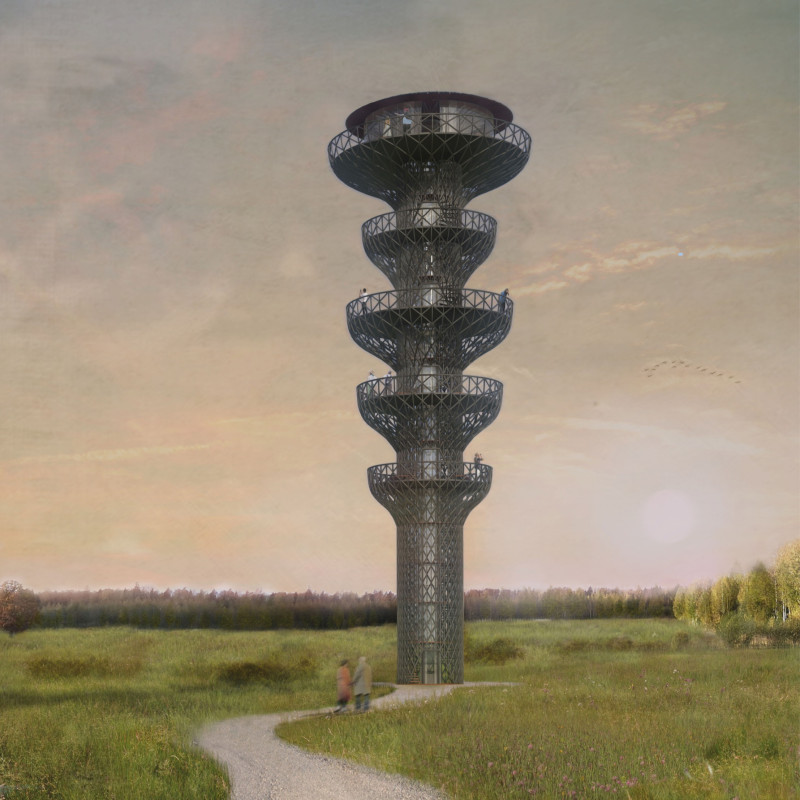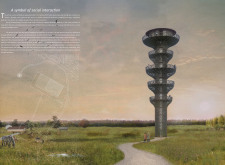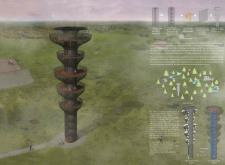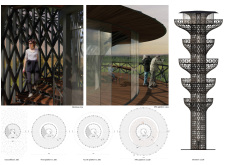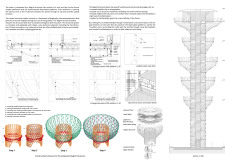5 key facts about this project
The design located in the North Vidzeme Biosphere Reserve near Kurgi farm in Latvia serves as a modern interpretation of local customs and traditions, particularly the seasonal practice of mushroom picking. The structure aims to offer stunning views of the surrounding landscape while encouraging visitors to engage deeply with nature. It does this by creating an experience that allows people to connect with the environment visually and physically.
Structural Framework
The building makes use of a diagrid framework featuring circular funnel-shaped cantilevers that support various observation platforms. This framework provides needed stability while keeping material usage low, offering an efficient choice compared to standard construction methods. The triangulated design allows the building to take on complex shapes without sacrificing strength, showcasing a variety of forms and spaces.
Circulation System
A circular elevator and a spiraling staircase are integral to the building’s design, allowing easy movement between the different levels. This circulation method promotes interaction with the space, as visitors can explore various heights while continuously taking in the views outside. The design simplifies accessibility, making movement through the structure engaging and intuitive for all users.
Observation Platforms
Observation platforms offer unobstructed 360-degree views of the biosphere, enriching the visitor experience. Each platform provides unique perspectives, adding to the overall appreciation of the natural surroundings. Thoughtful lighting enhances these areas, emphasizing architectural shapes while ensuring a comfortable setting for those who visit.
Material Inspiration
While specific materials are not extensively outlined, the design draws from elements of traditional Latvian architecture. Features such as dark thatched roofs and wooden enclosures reflect local building styles. This connection to regional heritage helps the structure feel part of its environment, blending modern design with cultural references.
At the upper level, the observation area includes details that echo the natural landscape, inviting visitors to reflect on the connection between the built environment and nature.


